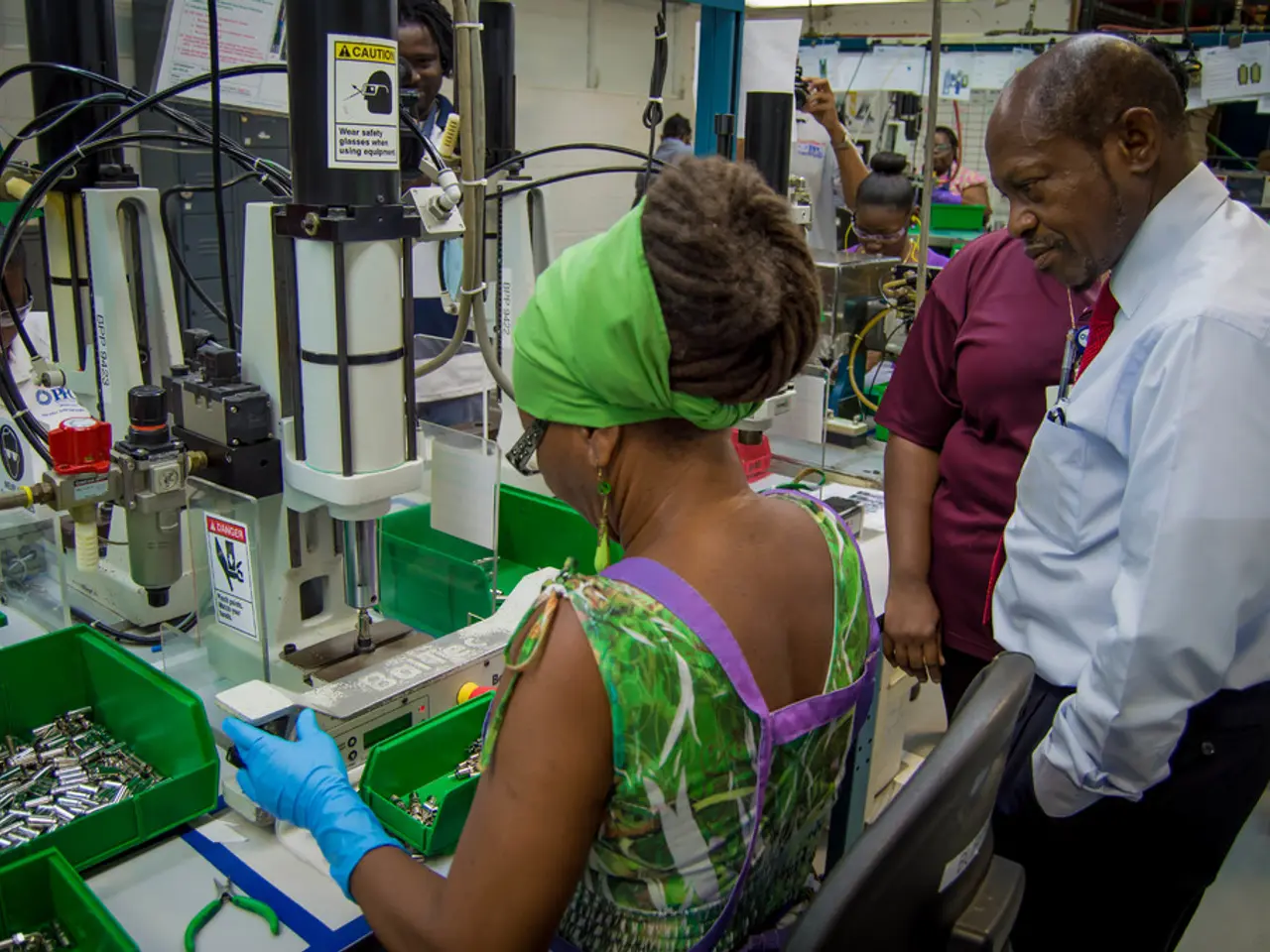Developing magnetic innovations: the anticipated breakthrough in stopping mechanisms
In the realm of technology, magnetic braking systems are making significant strides, transforming the way we travel and operate machinery. These advancements, driven by improvements in magnet technology and partnerships between governments and industries, are poised to reshape various sectors, from renewable energy systems to transportation.
Permanent magnets, a core component of magnetic braking systems, have seen remarkable improvements. New materials like rare earth magnets offer higher magnetic strengths and better performance, leading to quicker deceleration and more energy-efficient braking.
One area where these advancements are particularly noticeable is in urban air mobility (UAM) vehicles. By utilizing magnetic principles for braking, the landing process efficiency of these vehicles is significantly enhanced.
In the transportation sector, electric cars are increasingly adopting magnetic braking systems to boost efficiency and reduce wear and tear on traditional friction-based brakes. Electric vehicles equipped with these systems witness improved performance, longer operational lifetimes, and reduced maintenance requirements.
Electro-mechanical brakes (EMB) represent a significant advancement, particularly for electric vehicles. EMB systems offer several advantages over traditional hydraulic brakes, including lighter overall vehicle weight, reduced maintenance needs, and more precise braking control. They also facilitate faster and more reliable assembly and can be seamlessly integrated with other vehicle control systems.
Magnetic powder brakes have also advanced, with variants like variable torque brakes and automatic control brakes. These types of magnetic brakes improve control accuracy and system responsiveness, which is beneficial for transportation-related manufacturing and related machinery.
Beyond braking, magnetic levitation (maglev) technology continues to evolve, with potential impacts on transportation speed and efficiency. Current innovations include hybrid rail-maglev systems and evacuated tube concepts, which could revolutionize mid- and long-distance travel, making it faster, quieter, and more energy-efficient.
As we move forward, it's crucial to ensure that the widespread adoption of magnetic braking systems does not inadvertently lead to environmental or social harm. Impact assessment plays a vital role in this regard.
Moreover, modular design allows for phased integration of magnetic braking systems, reducing the financial burden for existing infrastructure.
The future of transportation is undeniably magnetic. Improved braking systems, especially EMB, enhance electric vehicle efficiency, safety, and maintenance profiles, making electric vehicles more viable and attractive. Advances in maglev and hybrid track systems promise faster, quieter, and more energy-efficient rail transport with lower infrastructure costs, supporting sustainable and rapid mass transit. Thus, magnetic braking technologies and magnetic levitation are key enablers in progressing toward more efficient, safer, and faster transportation modes globally.
User education is crucial in ensuring that the benefits and potential concerns of magnetic technology are widely understood. As we embrace these advancements, it's essential to foster a culture of continuous learning and improvement to ensure the safe and responsible use of these technologies.
References: 1. Magnetic Braking Systems: A Review 2. Electro-mechanical Brakes for Electric Vehicles: A Review 3. Hybrid Maglev Systems: A Review 4. Evacuated Tube Transportation Systems: A Review 5. Hyperloop: A Review
- The advancements in magnet technology, such as new materials for permanent magnets, are playing a significant role in the science behind magnetic braking systems, which are reshaping various sectors like finance (through the increased efficiency and reduced maintenance requirements of electric vehicles).
- The increasing adoption of magnetic braking systems in the transportation industry, particularly electro-mechanical brakes (EMB), is not only boosting the performance of electric vehicles but also impacting technology in areas like transportation efficiency (through the development of magnetic levitation and hybrid rail-maglev systems).
- The future implications of magnetic forces extend beyond transportation, as they are also being applied in the realm of industry and science, for instance, in the review of various systems like magnetic braking systems, electro-mechanical brakes for electric vehicles, hybrid maglev systems, and evacuated tube transportation systems.




